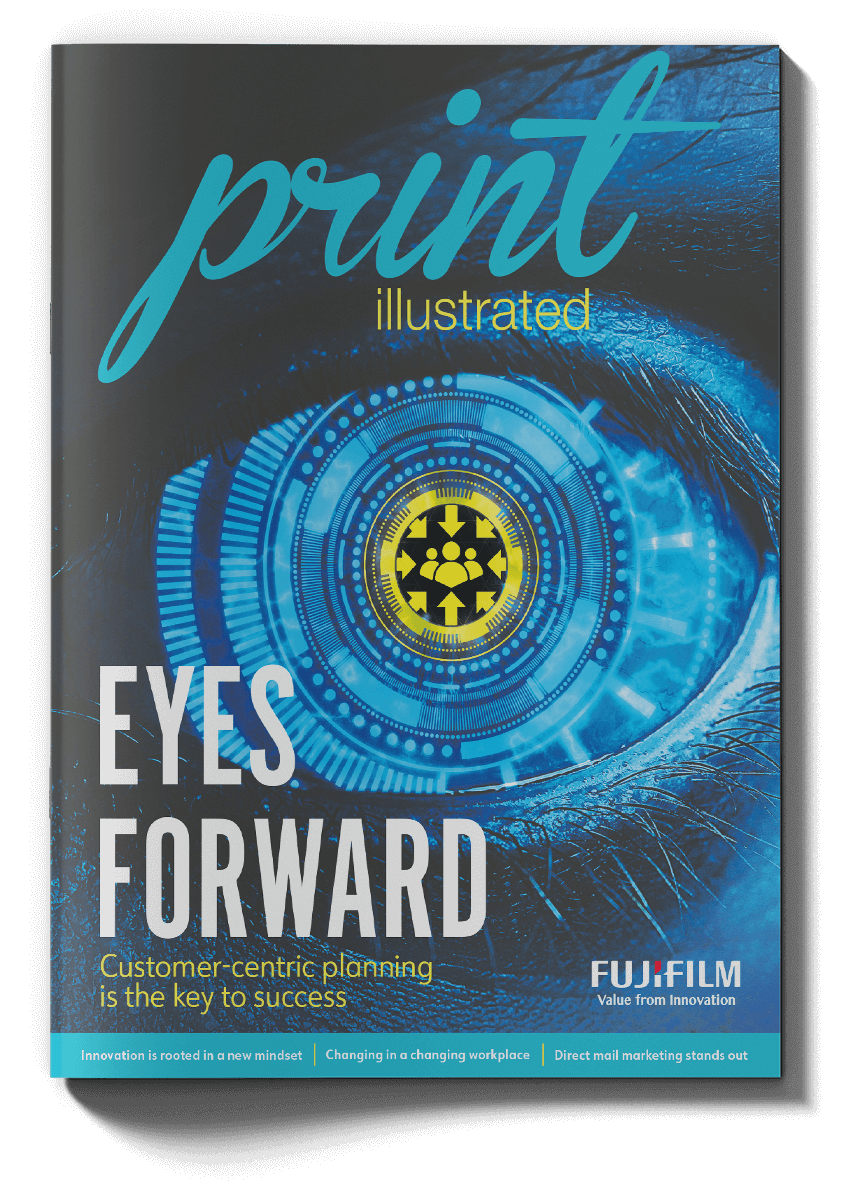After 19 years of service within the printing industry and traveling across 26 countries, Peter Muir admittedly had pretty much seen and done it all. When he left to create Bizucate 13-plus years ago, he continued his passion for developing and delivering face-to-face workshops and online courses, sprinkling in long-term consulting projects and passionate keynotes to audiences in all kinds of markets. An expert in the areas of innovation, leadership, trust and productivity, Muir has an especially strong passion for customer loyalty and customer-building planning.
Bizucate worked to create distinctly educational coverage of issues and trends in business strategy, management, sales, marketing and operations, working to build relevant and informative courses, presentations and campaigns, while carefully identifying the most appropriate channels of communication. Paramount to the success of all of this, Muir is in tune to what it takes to build customer-facing relationships. The strategy, amid a variety of other tenets, is to determine their needs and goals and then create a foundation you can build upon.
“When you hear the term ‘business development,’ you think of ‘What can I do to help you grow your business and/or be successful?’” Muir says. “At the core of that is: What do you know about their business? What do you know about who they are? What they do? Who they do it for? How and why they do it? Where they’re going and why? If you’re doing your job for you and your customer, you’re doing your research. It’s not about selling whatever it is that you sell; it’s about helping your customer, whoever that buyer is.”
“It’s not about selling whatever it is that you sell; it’s about helping your customer, whoever that buyer is.”
– Peter Muir, President, Bizucate
If building a strong customer-centric company seems that simple, it should. But the way Muir sees it is that too many people get caught up in trying to be transactional. What can I sell you? What can you buy? They do not think about that long play. That long play, as Muir views it, rests in your ability to provide value to your customer—give them something they cannot get anywhere else. In the “I’ll-help-you-you-help-me” world of relationship building, being able to qualify your worth to each other is critical (see “The 7·6·3 Approach to Business Development”).
“Remember that as much as you’re qualifying them, they’re qualifying you,” Muir says. “Nobody should want to be seen as the lowest cost. You want to be seen as the vendor that goes above and beyond doing things the way they’ve always been done. Stay on the right path for them and help them to be and think innovatively. And when I say innovation, I mean improving what exists or creating something new. You not only want to meet your clients where they are, but stay ahead of the curve and help take them further.”
Muir breaks down the process into what he calls the 4 C’s: Curiosity, Courage, Context and Credibility. Look no further than the reinvention of Domino’s Pizza, which Muir likes to use as an example of how a brand can refocus its strategy with help from customer input.
After taking a deep dive into customer research, Domino’s found its pizza was tied for last with Chuck E. Cheese. Through a combination of transparency, strategy and counterintuitive marketing, Muir says the company rose from the literal pizza ashes. “They took the time to emphatically listen to what their customers were saying. And it was not good. It was things like: ‘Microwave pizza is far superior.’ ‘Worst excuse for pizza I’ve ever had.’ ‘The taste of its crust is like cardboard.’ They not only took three years to redesign the whole process of the pizza itself—the dough, the sauce, the cheese, the toppings—but the owner went on record and said they screwed up, but that they were listening.”
Today, Domino’s stock is trading around 325, up from below 10 before the “cardboard pizza” criticism. All, Muir says, because it showed empathy and listened.

Relationship leveraging
The Standard Group has a customer with hundreds of products that operates more than 70 stores across the country. While one of its regular orders includes product tags, it always is a monumental task to provide Standard with PDFs of all the tags. In order to help streamline the process, the Standard team had to think differently with 10 different product tag designs, hundreds of products and thousands of potential variations.
Being able to provide superior prepress was how the printers were able to service the account. But this time, the customer was asking for a shorter production time frame and lower cost. In addition, the customer had invested a significant amount of designer resources to create all the PDF production variations.
The eventual solution rested in The Standard Group’s ability to leverage variable data templates and digital printing. CMO Thanh Nguyen says all the customer has to do now is upload an Excel spreadsheet with associated images and the Standard system automatically builds the product tag templates and generates the production PDFs. “We even figured out how to generate product bar codes automatically. This drastically shortened their production cycle, saved them money and increased tag production by over 6,250% without needing additional resources.”
Teamwork. By attacking the issue together, the problem was resolved—with a significant amount of win-wins to go around for both sides. “Sometimes it’s not all business,” Nguyen says. “Relationship building can be done one project at a time, but the most resilient relationships are the more personal ones. This can be achieved through consistent communication and active listening to understand your customer’s business. Helping your customer when they are in a bind is a quick way to become a valuable resource and business partner.”
“Relationship building can be done one project at a time, but the most resilient relationships are the more personal ones.”
– Thanh Nguyen, CMO, The Standard Group
The bottom line is that the deeper your relationship and the more understanding you have of your customer’s business, challenges and goals, the more valuable you are to them. Building strong relationships with your customers will be more forgiving should you falter, and you will be under less pressure to provide the lowest-cost commodity product. Nguyen says The Standard Group expects its customers to treat them equally and provide quick, detailed and honest feedback. When customers know that being open benefits everyone in the long run, they are more open to being honest.
“We welcome all feedback from our customers—positive and negative,” Nguyen says. “The ones who are upset never say a word. And there’s no way to win them back. We encourage our sales and customer service team to ask for feedback. We share any customer praise or testimonial with our employees through our daily company updates. Negative comments and quality issues undergo a critical review and correction process, and then they are presented to our customers. We also gather feedback through annual customer surveys and regular annual account reviews.”
Building this type of relationship matters, and when done correctly, sometimes helps a company prove itself in the most significant way. This played out last for Nguyen, in what he calls “the ultimate customer relationship experience.” After one of Standard’s salespeople lost his spouse in a tragic accident, two of his customers drove three hours one way to attend the wake. “They showed their support and drove back that night,” Nguyen says. “Their relationship was more than just business, but on a deeper, more personable level. I remember the quote by Theodore Roosevelt, who said, ‘People don’t care how much you know until they know how much you care.'”
In the world of customer-centric relationships, no truer words have been spoken.
The 7·6·3 Approach to Business Development
Helping your customers to be successful continues to be a valued approach to business development and a difference maker in today’s landscape. Taking the time to research a client helps you understand who they are, what they are facing, where they could be going and how you could fit. By identifying potential valued ideas, you build synergy. Peter Muir, President of Bizucate Inc., shares the strategy that works for him.
7 Knows
- Who they are?
- What they do?
- Who they do it for?
- How they do it?
- Why they do it?
- Where they are going/struggling?
- Where can/cannot I help?
6 Reasons Why
- Save me/make me money
- Make me/my organization look good
- Make my life easier/my organization more efficient
- Save me/my organization
- Challenge me/help my organization go beyond
- Because it’s the right thing to do/it’s required
3 Good Ideas
- After doing research and developing your ideas, bring those ideas to your customer/prospect/colleague—setting you apart from others
- Helping you grow yourself, your team, your department and your organization at the same time
- Often using acquisition and retention/making progress themes as a foundation

